Linkfest #19: "Flop Rock", Contranyms, and The Weirdly Violent History of the Michelin Man
What time is it? Why, it's time for "the opposite of doomscrolling"! 🌞
Here's your next Linkfest -- the finest thought-stuff I could find during my alphabetic read-through of the entire Internet.
Thanks so much for subscribing! And if you’re enjoying it, hey hey: Spread the word -- forward this email to anyone who you think might enjoy it, anywhere on the planet. There's a pay-what-ya-want signup here; the folks who can afford to contribute help keep it free for everyone else.
To begin ...
1) 🎲 Card-shaped dice
Diceomatic Prototype from Yarro Studios on Vimeo.
Apparently back in the 1920s, there was a vogue for mechanical dice cards: You'd click it, and internal rotors would spin; when they stopped, those were your pseudorandom numbers.
The game designer Tanner Yarro has designed some modern ones -- with a sort of steampunk design, harkening back to those early-20th-century roots. He's got a Kickstarter campaign to do a first run, with over $1.1 million in pledges.
I'm tempted to grab one of these! I hope he actually follows through with it, and this isn't just Kickstarter vaporware ...
2) 📡 The PhD thesis that created the image for Joy Division's famous album
@scientificamerican Joy Division’s striking Unknown Pleasures album cover holds a scientific mystery. The image’s true origin was lost until senior graphics editor @ChristiansenJen traced it from the Cambridge Encyclopedia of Astronomy to its debut in a 1971 issue of Scientific American and then all the way to Cornell’s Rare Book Room. The computer-generated stacked plot of a famous pulsar came from a 1970 dissertation by Harold Dumont Craft Jr—who had no idea his data visualization was featured on one of rock’s classic albums. 🔗 You can read more at the link in our bio! 🎤 Jen Christiansen 🎞️ Chris Schodt 📸 Jen Christiansen, Joy Division, The Cambridge Encyclopaedia of Astronomy, Harold D. Craft Jr., Alberto Puente, Division of Rare and Manuscript Collections, Cornell University Library, Getty Images #scientificamerican #science #sciencetok #stemtok #pulsar #astronomy #art #music #joydivision #unknownpleasures #albumcover #vinyl #record #pulsar #arecibo #postpunk #rock ♬ original sound - Scientific American
This Tik Tok video is pretty awesome.
It's by Jen Christiansen, the graphics editor of Scientific American, who went on a fascinating hunt to find the original source for the cover of Joy Division's 1979 debut album "Unknown Pleasures".
Normally in a blog/newsletter post I'd describe what she found, but it's so nifty and her sleuthing is so cool that I don't want to give too much away.
Just watch the video! If you don't have a TikTok account you can watch it anyway; you might need to hit the "view as guest" button and may have to solve a CAPTCHA, but it's free.
Christiansen also wrote a terrific blog post about the whole hunt, too.
3) 📖 List of "contranyms"

Contranyms are words that have two meanings -- which are the opposite of each other.
I'd never heard of the concept before, but this list at Mental Floss contains some really fun examples, including ...
- Left can mean either remaining or departed. If the gentlemen have withdrawn to the drawing room for after-dinner cigars, who’s left? (The gentlemen have left and the ladies are left.)
- Off means “deactivated,” as in to turn off, but also “activated,” as in the alarm went off.
- Go means “to proceed,” but also “give out or fail,” i.e., “This car could really go until it started to go.”
- Cleave, meaning “to cling to or adhere,” comes from an Old English word that took the forms cleofian, clifian, or clīfan. Cleave, with the contrary meaning “to split or sever (something)”—as you might do with a cleaver—comes from a different Old English word, clēofan.
4) 🎶 Designing an instrument from Star Trek
In the sixteenth episode of the first season of Star Trek: The Next Generation, the show depicts "an unnamed Aldean instrument". As the artist S. Astrid Bin describes it in this blog post ...
This instrument is a light-up disc that is played by laying hands on it, through which it translates your thoughts to sound. [snip] One girl is sent to a family of very kind musicians, and the grandfather teaches her to play this instrument. When she puts her hands on it, lays her fingers over the edge and is very calm it plays some twinkly noise, but then she gets anxious when she remembers she’s been kidnapped, and it makes a burst of horrible noise.
Bin loved the concept and decided to make a real-world version of it! She contacted the guy who designed it, Andrew Probert (famous for also designing the Delorean in Back to the Future), and he sent her his original design sketch ...
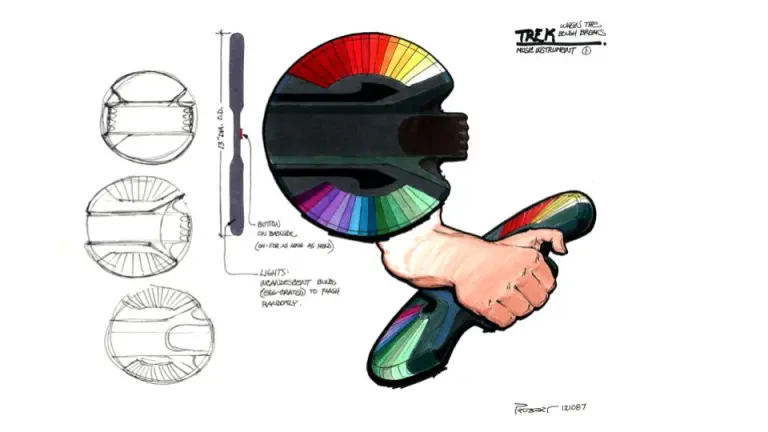
Obviously, it's impossible (for now) for an instrument to translate your thoughts to sound. So Bin did a rough approximation: She crafted it so that it detects how strongly you're gripping it and how violently you're moving it around. The more you remain calm and don't grip it too strongly, the sweeter the tune; squeeze it harder and the music gets intense; make any sudden moves and you get harsh static.
She wrote up her whole design diary and it's a very cool read!
5) ⚔️ The weirdly violent background of the Michelin Man
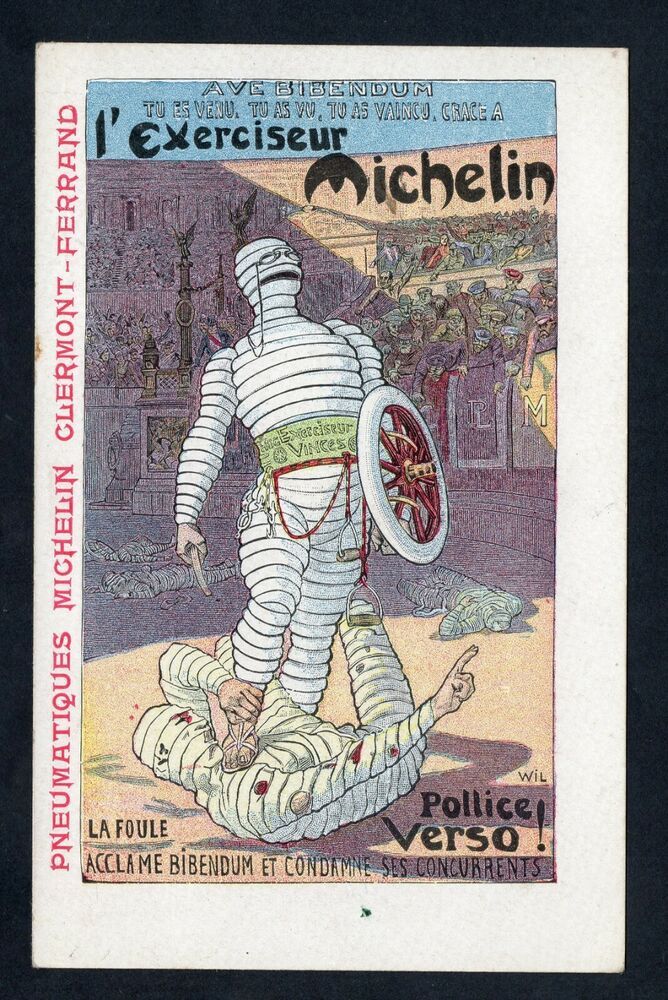
Via Matthew Ingram's wonderful newsletter "When The Going Gets Weird", I found this fascinating blog post about the strangely intense background of the Michelin Man.
Today, the mascot has a sort of jolly appearance, but in his earliest iterations he was "a stone cold killer who slaughtered his rivals, smoked heavily and attracted violence and controversy wherever he went."
For a start, the Michelin Man’s name is actually Bibendum, named for the Latin slogan ‘Nunc est bibendum’ which was taken from a collection of poems by Roman poet Horace, and which means “Now is the time to drink”.
Here's his first ever appearance -- he's hoisting a cocktail that is filled with glass and nails, and he's surrounded by some lumpen horrors straight out of Lovecraft ...
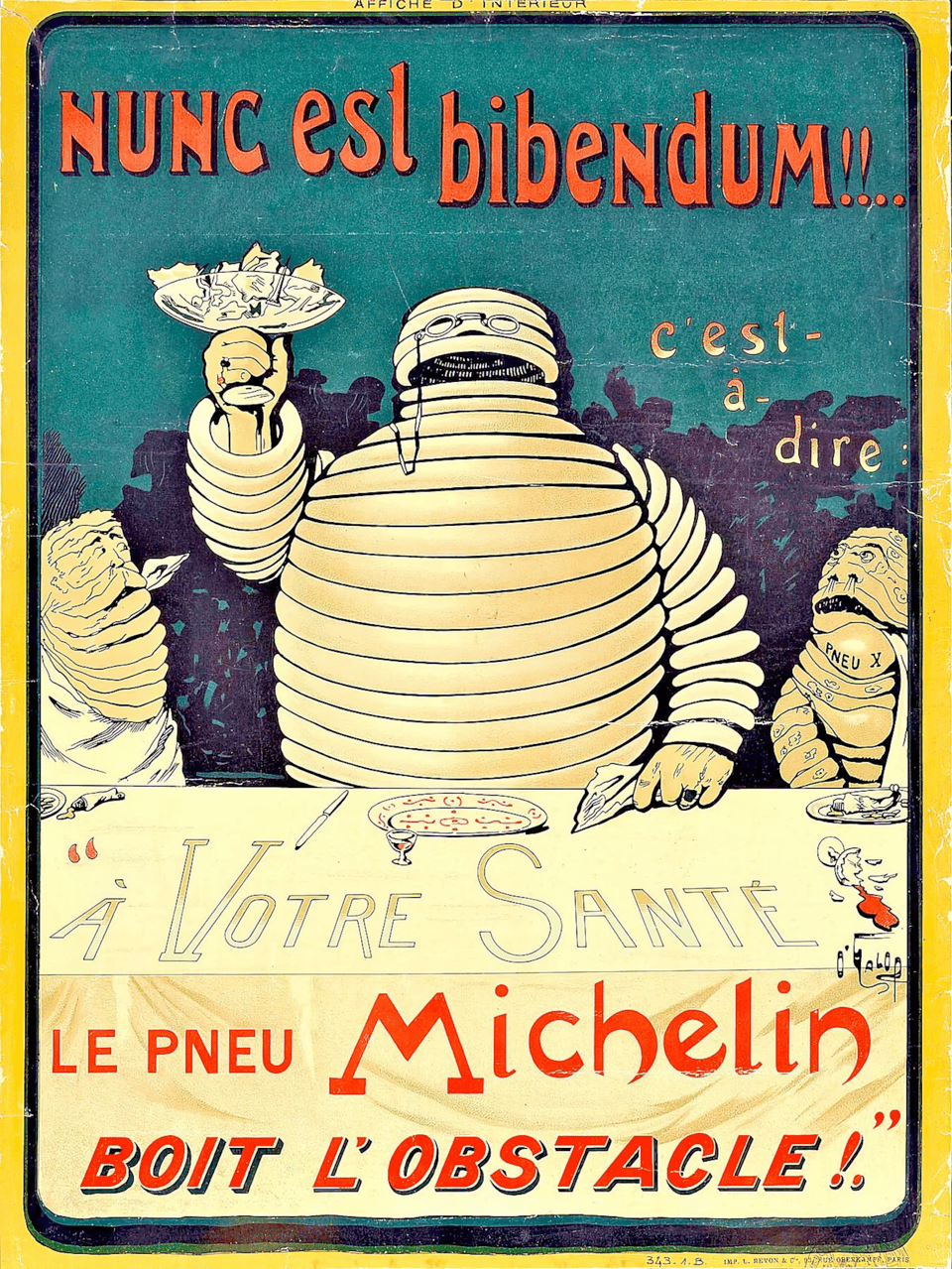
I mean, I get it -- he's the strong tire, unaffected by sharp road objects, while the lesser tires next to him are weak and haggard. It's pretty damn weird though lol.
The image at the top of this item? It's a gladiatorial Michelin man, standing astride his bloody, slaughtered rival tire.
Go read the whole piece, it's fascinating! And if you want to see more incredibly strange early Michelin-Man ads, here's a ton on Pinterest; keep scrolling because there are some truly wild ones further down.
6) 🧊 Towing icebergs to provide drinking water

Water from a melted iceberg is often exceptionally pure and tasty; the mother of one Newfoundland fisherman who melts chunks of local iceberg won't drink anything else.
So apparently there's a global movement of entrepreneurs who are considering iceberg farming -- i.e. dragging an iceberg to a part of the world where they don't have a ready supply of clean water. According to this story in the New Scientist, fully two-thirds of the world's freshwater is currently frozen in icebergs.
Apparently it's feasible ...
Recently, Alan Condron at Woods Hole Oceanographic Institution in Massachusetts used a mathematical model to simulate icebergs being towed from Antarctica to Cape Town and the United Arab Emirates. Considering solar radiation, wave erosion and heat exchange between the ocean and iceberg, he calculated that an iceberg 300 metres long and 200 metres thick at the time of capture would reach Cape Town with enough bulk remaining to supply 2.4 million litres of water.
The problems, as you can imagine, are environmental. Towing an iceberg through warmer waters affects those waters, in negative ways. Plus, the bounty from a single iceberg isn't that big: Those 2.4 million liters of water (from the example above) would be used up by a big city in a single day.
Kind of post-apocalyptic vibe overall, when you think of ships towing icebergs around a rapidly warming planet! Still, on its technical details, a weirdly interesting story; check it out.
7) 🧠 AI helps judge Olympic gymnastic routines
Apparently Fujitsu has created an AI system that helps adjudicate disputes over Olympic gymnastics scoring.
The system uses "four to eight high-definition cameras" to record every routine live. After gymnasts have been scored, if they dispute the "difficulty score" the judges have handed down, the gymnasts can ask for the AI system to give its verdict.
The system itself was trained on ...
... video footage of 8,000 routines [and] the entire Code of Points, the definitive guide to every element, or skill, a gymnast might perform. The system had to be taught the difference between an element and an interval between elements, as well as how much, or how little, movement constitutes “stopping.” It was taught what kinds of variation in a skill (like a split leap at less than 135 degrees) calls for which deduction.
Apparently the system works well enough for the judges to accept its verdict ...
Consider the switch ring leap, an iconic skill on floor and beam in which a gymnast leaps into a split position with the back leg bent and the head thrown back. It’s notorious for being downgraded in the difficulty score. That’s because judges are especially strict with it—according to the Code of Points, for the move to get full credit, the upper back must be in an arch and the head released. The legs must reach a 180-degree split. The front leg must be horizontal and the back leg bent, with the back foot reaching the crown of the head or higher. All this happens, and is judged, in under a second. Human errors are inevitable.
At the 2023 World Championships, JSS was able to correct just these kinds of errors. Australia’s Clay Mason Stephens filed an inquiry into his pommel horse score, and after it was reviewed using JSS, the score was raised more than three points. Not all the elements of his routine had been counted by the human judges, which had resulted in a “short exercise” deduction.
I'm always interested to learn about machine-learning systems that are being integrated to assist or augment human judgment. Since LLMs are hogging all the attention in the world of AI now, it's easy to forget that there are tons of fascinating models custom-designed to help with really weird niche areas like this.
8) 🌕 A climate model of the planet in "Dune"
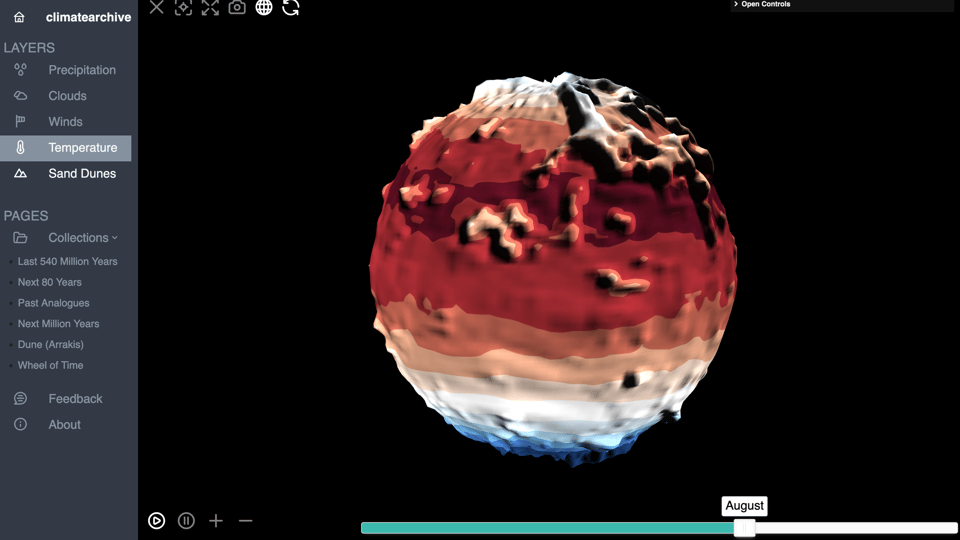
A couple of climate scientists decided to model the planet Arrakis, the location of the "Dune" stories by Frank Hebert. The scientists gathered as much info as they could from the book and the Dune Encyclopedia, then let the model run.
Their findings? Apparently the planet would, in fact, be inhabitable -- though life would be pretty rough. And Herbert might have slightly erred in where placed the cities.
As Tina Hesman Saey writes in ScienceNews ...
In one throwaway line, the author described polar ice caps receding in the summer heat. But Farnsworth and colleagues say it would be far too hot at the poles, about 70° C during the summer, for ice caps to exist at all. Plus, there would be too little precipitation to replenish the ice in the winter. [snip]
Although Herbert’s novels have people living in the midlatitudes and close to the poles, the extreme summer heat and bone-chilling −40° C to −75° C temperatures in the winters would make those regions nearly unlivable without technology, Farnsworth says.
Temperatures in Arrakis’ tropical latitudes would be relatively more pleasant at 45° C in the warmest months and about 15° C in colder months ... But the tropics on Arrakis pose their own challenges. Hurricane force winds would regularly sandblast inhabitants and build dunes up to 250 meters tall, the researchers calculate.
Dunes up to 250 meters in height! Damn.
They put the results of the model online so you can play around with it in your browser ...
9) 📷 Developing the film found inside a tiny "spy" toy camera
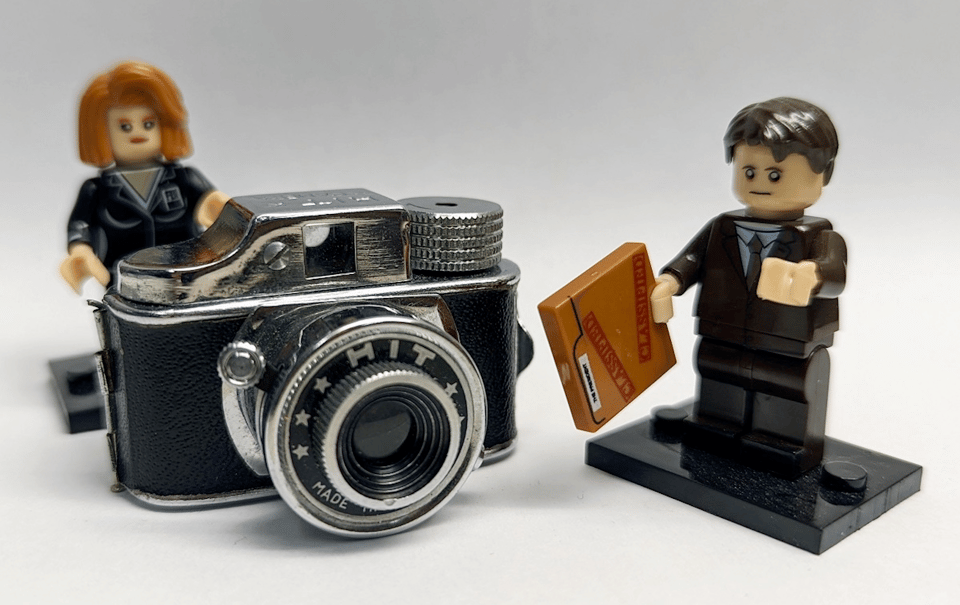
Back in the 1930s, designers in Japan created these cute little "spy" cameras, so tiny they could be concealed in one's hand. They were never actually used by real spies; mostly they were sold as novelty items.
While processing the archival materials of nanotech pioneer Nadrian Seeman, Sarah Newhouse found the cute lil' camera you see above! And, remarkably, it still had film inside.
Given Ned’s birth year (1945) and the dates when these cameras were popular, these photos were probably shot in the 1950s through the 1970s, when he was a child, teenager, or young adult. Could they be family photos? Something related to the beginning of his academic career? Did he own and take tiny photos of a cat?
To find out, she hunted down a special film-processing place that could handle such oddball film, and sent it off. It took two months but, alas, when the pictures came back it appeared that the images were just blurry gray noise -- probably from light leakage or materials degradation ...

That said, there's a sort of eerie beauty to the images -- they look like ghostly vistas of lost time. Check out the whole article for more pictures of the wee camera and scans of the corroded film images.
10) 🥁 Drum machine that drums on physical blocks
material sequencer (wood) from mHz on Vimeo.
Most drum machines generate their sounds virtually -- making noises that are synthesized by circuitry or software.
For his "Material Sequencer" project, though, the artist Mo H. Zareei did things differently: He built a chip that works physically. It rhythmically fires a solenoid that whacks a small block of solid matter -- aluminum, copper, wood, steel or brass. To swap between sounds, you manually change the block; one sound at a time.
You can speed it up or slow it down with a little wheel, and you can flick dipswitches to change the pattern. Very low-fi; I like it! I'd enjoy hearing a bunch of these whacking away simultaneously, using different materials and playing different patterns, like different drums in a kit.
11) 🎳 A final, sudden-death round of reading material
"Oxanium is a square, futuristic font family." 🎳 Spicy Nuggets surge pricing. 🎳 Linux on a 15-cent microcontroller. 🎳 Gorgeous photography of abandoned urban tree-beds. 🎳 "Human Or Not", a Turing-test chat game. 🎳 Taco Bell, shrapnel, gasoline: A list of "things unexpectedly named after people". 🎳 Why the Vatican classified capybara as a fish. 🎳 In praise of talking about the weather. 🎳 The mysterious writing system from Easter Island. 🎳 The first-ever photographs of pets. 🎳 Michigan ham-radio operator talks to the International Space Station using a handheld antenna in his back yard. 🎳 Cyborg jellyfish that measure deep-ocean climate-change data. 🎳 "Flop rock", the underground scene of floppy-disk music. 🎳 Wanda Koop's Ukranian-war paintings are spookily striking. 🎳 Paying for library late-fees with cat photographs. 🎳 Boiling water to remove its microplastics. 🎳 A programming language that permits variables to travel in time. 🎳 Data crunch finds that UFOs appear to be avoiding the USA's southeast. 🎳 Why the first photos of the moon from Intuitive Machines were so blurry. 🎳 The "Quantum Cheshire Cat Experiment", or, separating a particle's properties from its mass. 🎳 What in tarnation is "tarnation"? 🎳 Watching analog camera-knobs be repainted is deeply soothing. 🎳 Harold Halibut, an upcoming claymation-style video game. 🎳 Fiberoptic pixel display. 🎳 "Txt Your Ex" will generate an AI version of your ex for you to talk with. 🎳 Ten hours of "soothing smooth deep rumble space sounds". 🎳 AI wedding-vow generator.
CODA ON SOURCING: I read a ton of blogs and sites every week to find the material for the Linkfest. Some of the ones I used for several entries this week are the blog at Adafruit Industries and Matthew Ingram's superb "When The Going Gets Weird" -- go check 'em out!
